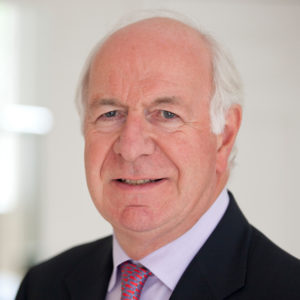medwireNews: Treatment with recombinant human insulin-like growth factor (rhIGF)-1 enables children and adolescents with severe growth failure due to primary IGF-1 deficiency (SPIGFD) to reach near-adult height (NAH), suggest real-world registry data.
Those most likely to benefit were treatment-naïve and prepubertal (NPP) at the start of treatment, the researchers note, adding, however, that improvements in NAH were still evident in the adolescents who started treatment at a more advanced age.
A total of 102 patients (65.7% boys) who were receiving rhIGF-1 and had achieved NAH were identified from the Global Increlex® Growth Forum Database Registry. Of these, 85.3% had SPIGFD, 56.9% had not previously received growth hormone (GH) treatment, 44.1% were NPP, and 18.6% had Laron syndrome, three of whom were also NPP.
As reported in The Journal of Clinical Endocrinology & Metabolism, the patients had started rhIGF-1 treatment at a mean age of 11.8 years and the median duration of treatment was 3.9 years. Among the 58.6% of patients who underwent genetic testing, 25.0% out of eight tested positive for a GH defect, 65.5% of 29 tested positive for a GHR defect, and 28.6% of seven individuals tested positive for an IGF1 defect.
At the start of treatment, the children’s mean height was 124.9 cm overall, 118.6 cm among those in the NPP group, and 119.8 cm among those with Laron syndrome, with respective height standard deviation scores (HtSDS) of –3.6, –3.6, and –5.0.
Heights at NAH were a mean of 153.4 cm overall, 155.9 in the NPP group, and 144.2 in the Laron syndrome group, at which point the mean HtSDS was a corresponding –2.8, –2.2, and –4.1.
Investigator Marta Ramon-Krauel (Hospital Sant Joan de Déu, Barcelona, Spain) and colleagues report that the mean HtSDS gain from starting rhIGF-1 therapy to achieving NAH was 0.9 among the children overall, with 33.3% achieving a height within the normal adult range.
The mean HtSDS gains with treatment were better for the NPP patients, at 1.4 and a total of 46.7% of these patients achieved NAH within the normal adult range. Overall, 54.3% of NPP patients were considered responders based on their HtSDS improving by at least 0.3 at 1 year, as were 62.5% of those with Laron syndrome and 51.9% of the full study population.
The study authors highlight that NPP patients who started rhIGF-1 treatment at no later than 10 years of age had a numerically greater improvement in HtSDS from baseline each year compared with those who started treatment after this age, which supports early initiation of treatment. Height velocity, while highest in the first year of treatment was similar irrespective of age at initiation, although the researchers point out that population numbers were low in the later years of follow-up and so these data should be “interpreted with caution.”
Among the patients with Laron syndrome, there was a gain in mean HtSDS of 1.0, but only 10.5% were within the normal adult range. However, the researchers note that these individuals had the lowest HtSDS at baseline and the lowest NAH. Also, 14 of the 19 patients had previously received growth-promoting therapy when they initiated rhIGF-1, “therefore their HtSDS at rh-IGF-1 initiation may not accurately reflect their baseline HtSDS prior to any growth-promoting treatment”, they say.
Safety data “aligned with those observed in the overall registry population”, the team comments, and “were consistent with the previously reported long-time safety profile of rhIGF-1”, with treatment discontinuation reported in “a minority of cases.”
Specifically, treatment-emergent adverse events (TEAEs) occurred in 65.7% of patients, most commonly hypoglycaemia (24.5%), predominantly in the first year of treatment, headache (13.7%), lipohypertrophy (13.7%) and inject site reactions (10.8%). Serious TEAEs were reported in 15.7% of patients and treatment-related AEs in 53.9%.
The investigators conclude that their findings from a large cohort of patients with severe growth failure who achieved NAH with rhIGF-1 treatment have “confirmed the effectiveness and safety of rhIGF-1 observed in clinical trials and demonstrated that these findings are applicable in a real-world setting.”
They add that their study indicates that “rhIGF-1 therapy may be more effective at enabling patients with severe growth failure due to SPIGFD to achieve NAH when rhIGF-1 treatment is started at the prepubertal stage in patients with no prior exposure to growth-promoting treamtents.”
By Lucy Piper
medwireNews is an independent medical news service provided by Springer Healthcare Ltd. © 2025 Springer Healthcare Ltd, part of Springer Nature


